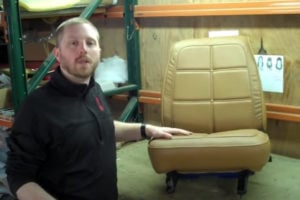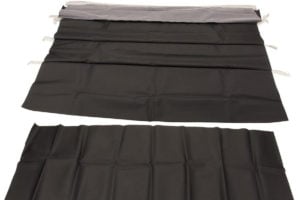Common Brake Pedal Diagnostics
Posted on: August 31, 2020 in Tech Tips
This is a list of common brake pedal diagnostics that we have put together to help you troubleshoot any brake pedal problems you might have.
| CAUSE | REASON |
| Bleeder screws on calipers not on top. | The bleeder screws on calipers must be at the 12:00 position on the caliper to allow all the air to escape during bleeding. A very common mistake installers will make is to reverse the side the caliper goes on giving you a situation where the caliper bleeder screw is facing down. It’s also common to use the wrong caliper on a bolt on disc kit giving a situation where the bleeder hole is shifted from the 12:00 position producing a pocket of air at the top of the caliper bore which can not be dislodged. Check your bleeder hole orientation. |
| A defective master cylinder which does not hold pressure. | If brake fluid bypasses a pressure seal on a master cylinder you will get a pedal that fades. To test for this obtain two inverted flare plugs at an auto parts store and plug both master cylinder outlets. Try your pedal. If the pedal is high and firm the master is good. If the pedal fades the master is bad. Replace master as necessary. |
| No residual pressure valve to rear drums. | Drum brakes require the use of a 10 Ib residual pressure valve in the line. This residual pressure counterbalances the drum brake spring tension keeping the shoes close to the drums. This results in a higher firmer pedal. You can test this by clamping off the rear hose removing the rear drums from the system. Now test your pedal. If the pedal gets better, you will need to splice a 10 Ib residual pressure valve into the rear line. |
| Hard line that loops up. | Hard brake line that loops up and then back down will tend to trap air. It doesn’t take much air to cause problems so check your lines carefully. |
| Incorrect master cylinder. | If the bore size of the master cylinder is too small for the fluid requirements of the system you will get a very poor pedal. This will happen most frequently with four piston calipers and with four-wheel disc brakes. The only solution for this is to install a larger bore master cylinder or a true four wheel disc master. |
| Incorrectly bled or adjusted rear calipers. | Rear calipers that have an internal parking brake with a lever can be troublesome. These calipers must be adjusted so that the piston is moved out and the pads are close to the rotor. If this initial adjustment is not made the pistons will travel outward during activation but no squeezing of the rotor will occur. This can be checked by clamping off the rear hoses and checking if the pedal gets better. Adjust as necessary. |
| Incorrect booster pin length. | The booster pin that pushes on the master cylinder must almost be touching the master cylinder piston face. A gap larger than 1/32″ will begin to introduce a spongy pedal. Adjust as necessary. |
| Silicone brake fluid. | While silicone fluid is great because it does not attack paint it also aerates very easily and can give a spongy pedal. |
| Rear wheel cylinders too large. | Rear drum wheel cylinders that are too large will give a poor pedal. Check as in step six above. |
| Loose front wheel bearings. | Loose front wheel bearings will cause rotor wobble. This will cause the caliper pistons to retract too far into the caliper giving a spongy pedal every time you hit the brakes. Check and adjust as necessary. |
Related Articles

Installing Molded Carpet
First, remove your molded carpet from the box. Lay it out in roomtemperature, or above, for a recommended 12 to […]

Seat Foam: Old vs. New
If you are unsure about whether your original seat foam is still good enough to use for your restoration, take […]

Installing a Bow-Type Headliner
We get calls every day asking for advice on installing a bow-type headliner, so we wanted to put together a […]
